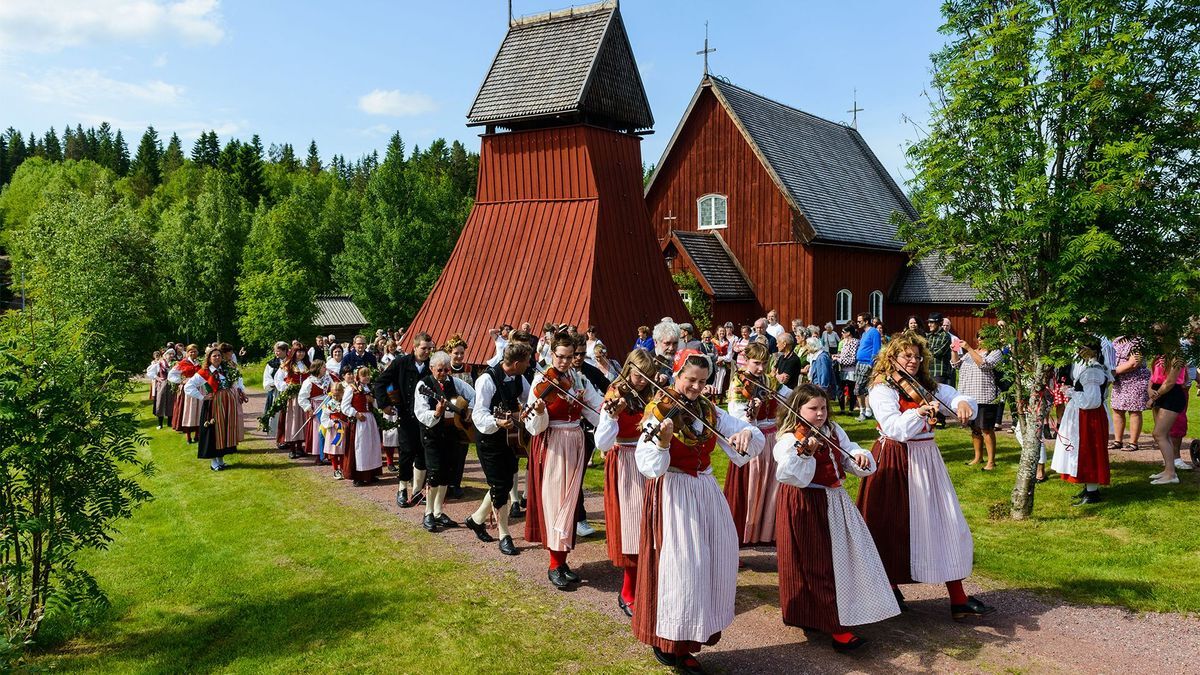
Swedish festivals are a vibrant mix of ancient traditions and modern celebrations. Ever wondered what makes these events so special? Swedish festivals often revolve around nature, light, and community. From the joyous Midsummer, where people dance around maypoles and feast on herring, to the serene Lucia Day, marked by candlelit processions, each festival has its unique charm. Midsummer is perhaps the most famous, celebrated with flower crowns, songs, and traditional foods. On the other hand, Walpurgis Night sees bonfires lighting up the night sky to welcome spring. These festivals not only bring people together but also offer a glimpse into Sweden's rich cultural heritage. Ready to dive into the world of Swedish celebrations? Let's explore 30 fascinating facts about these festivals!
Key Takeaways:
- Swedish festivals like Midsummer and Lucia celebrate the changing seasons with traditional food, music, and colorful customs. From dancing around maypoles to dressing as Lucia, these festivals bring people together to enjoy the best of Swedish culture.
- Whether it's welcoming spring with bonfires on Walpurgis Night or enjoying a crayfish feast in August, Swedish festivals are filled with unique traditions, delicious food, and joyful celebrations that bring communities together.
Midsummer: The Quintessential Swedish Celebration
Midsummer is one of the most important and widely celebrated festivals in Sweden. It marks the summer solstice and is a time for Swedes to enjoy the long daylight hours.
- Midsummer is celebrated on the Friday between June 19 and June 25.
- The festival involves dancing around a maypole, which is decorated with flowers and greenery.
- Traditional Midsummer food includes pickled herring, new potatoes, and strawberries.
- Many Swedes wear flower crowns made from wildflowers during the festivities.
- Midsummer is often celebrated in the countryside, where families and friends gather for picnics and barbecues.
Walpurgis Night: Welcoming Spring with Bonfires
Walpurgis Night, or Valborg, is celebrated on April 30th. It is a traditional spring festival with roots in ancient pagan customs.
- Bonfires are lit to ward off evil spirits and welcome the arrival of spring.
- Singing traditional songs is a key part of the celebration.
- In many cities, university students play a significant role in organizing the festivities.
- The festival is named after Saint Walpurga, an 8th-century abbess.
- In Uppsala, the celebration includes a famous river rafting event.
Lucia: The Festival of Lights
Lucia, celebrated on December 13th, is a festival of lights that honors Saint Lucia, a Christian martyr.
- A girl dressed as Lucia leads a procession of children, all wearing white robes and holding candles.
- Lucia wears a crown of candles on her head.
- The procession sings traditional Lucia songs.
- Saffron buns, known as "Lussekatter," are a traditional treat during Lucia.
- The festival symbolizes the triumph of light over darkness during the long winter nights.
Crayfish Party: A Summer Feast
The Crayfish Party, or Kräftskiva, is a popular summer event in Sweden, usually held in August.
- Crayfish are boiled with dill and served cold.
- Participants wear bibs and funny hats while eating.
- Drinking songs, known as "snapsvisor," are sung throughout the meal.
- The party often takes place outdoors, under lanterns and garlands.
- Crayfish parties date back to the 16th century when crayfish became a popular delicacy.
Christmas: A Blend of Traditions
Christmas in Sweden is a mix of Christian and pagan traditions, celebrated with unique customs and foods.
- The main celebration occurs on Christmas Eve, December 24th.
- A traditional Christmas meal includes ham, meatballs, herring, and "Janssons frestelse" (a potato and anchovy casserole).
- The Yule Goat, or "Julbock," is a common Christmas decoration.
- "Kalle Anka," a Disney Christmas special, is watched by many Swedes on Christmas Eve.
- Santa Claus, known as "Jultomten," delivers gifts to children.
Easter: A Colorful Celebration
Easter in Sweden is celebrated with a mix of religious and secular traditions, often involving colorful decorations and foods.
- Children dress up as "Easter witches" and go door-to-door for treats.
- Brightly colored feathers and eggs are common decorations.
- Traditional Easter foods include eggs, lamb, and salmon.
- Many Swedes decorate birch twigs with feathers and eggs, known as "påskris."
- Easter is also a time for family gatherings and enjoying the arrival of spring.
Celebrating Swedish Traditions
Swedish festivals offer a unique glimpse into the country's rich culture and history. From the vibrant Midsummer celebrations to the solemnity of All Saints' Day, each festival has its own charm and significance. These events bring communities together, fostering a sense of unity and shared heritage. Whether you're dancing around the maypole, enjoying a crayfish party, or lighting candles in memory of loved ones, there's something special about these traditions.
Experiencing these festivals firsthand can deepen your appreciation for Swedish culture. They highlight the importance of nature, family, and community in Swedish life. So next time you find yourself in Sweden, join in the festivities. You'll not only have a great time but also gain a deeper understanding of what makes this country so unique. Swedish festivals truly are a celebration of life, love, and tradition.
Frequently Asked Questions
Was this page helpful?
Our commitment to delivering trustworthy and engaging content is at the heart of what we do. Each fact on our site is contributed by real users like you, bringing a wealth of diverse insights and information. To ensure the highest standards of accuracy and reliability, our dedicated editors meticulously review each submission. This process guarantees that the facts we share are not only fascinating but also credible. Trust in our commitment to quality and authenticity as you explore and learn with us.
